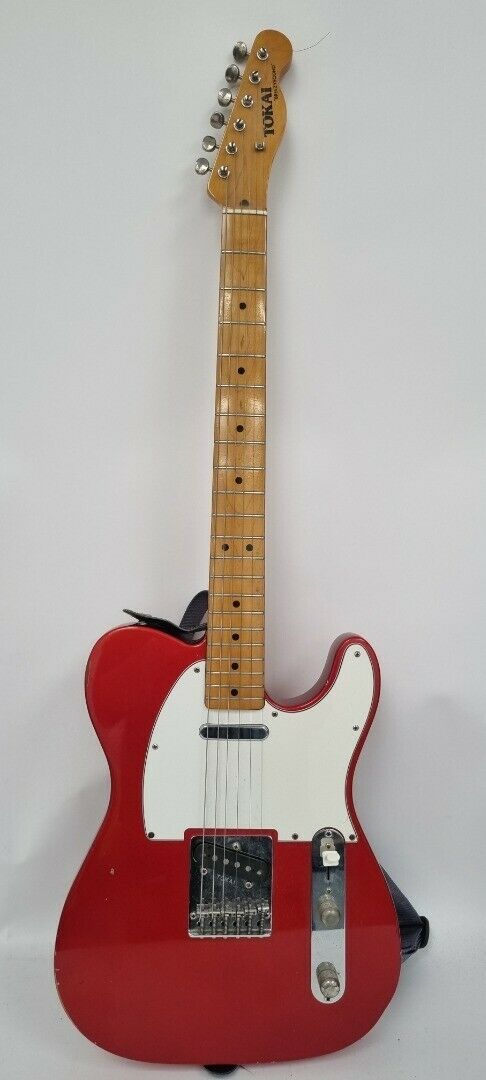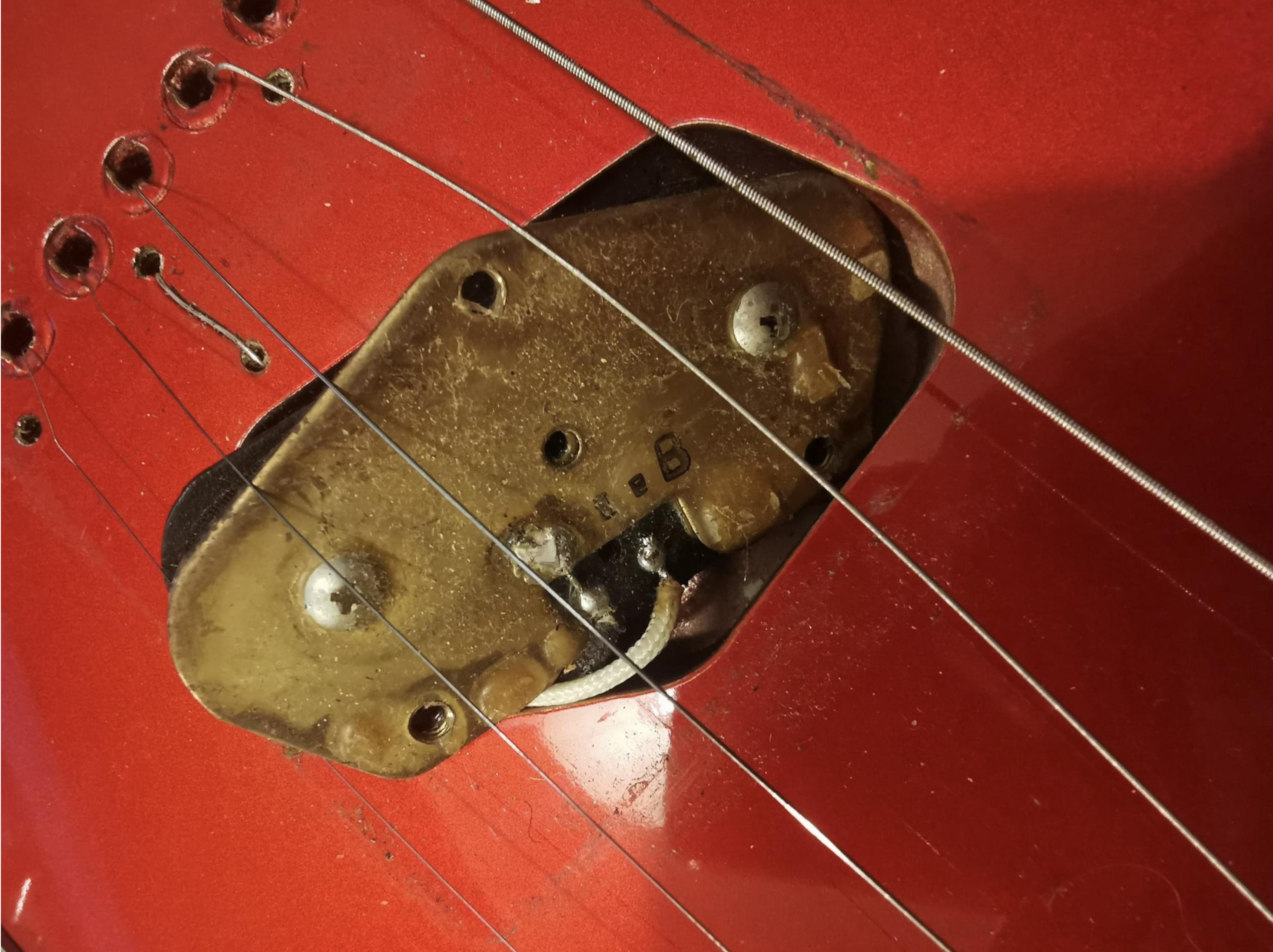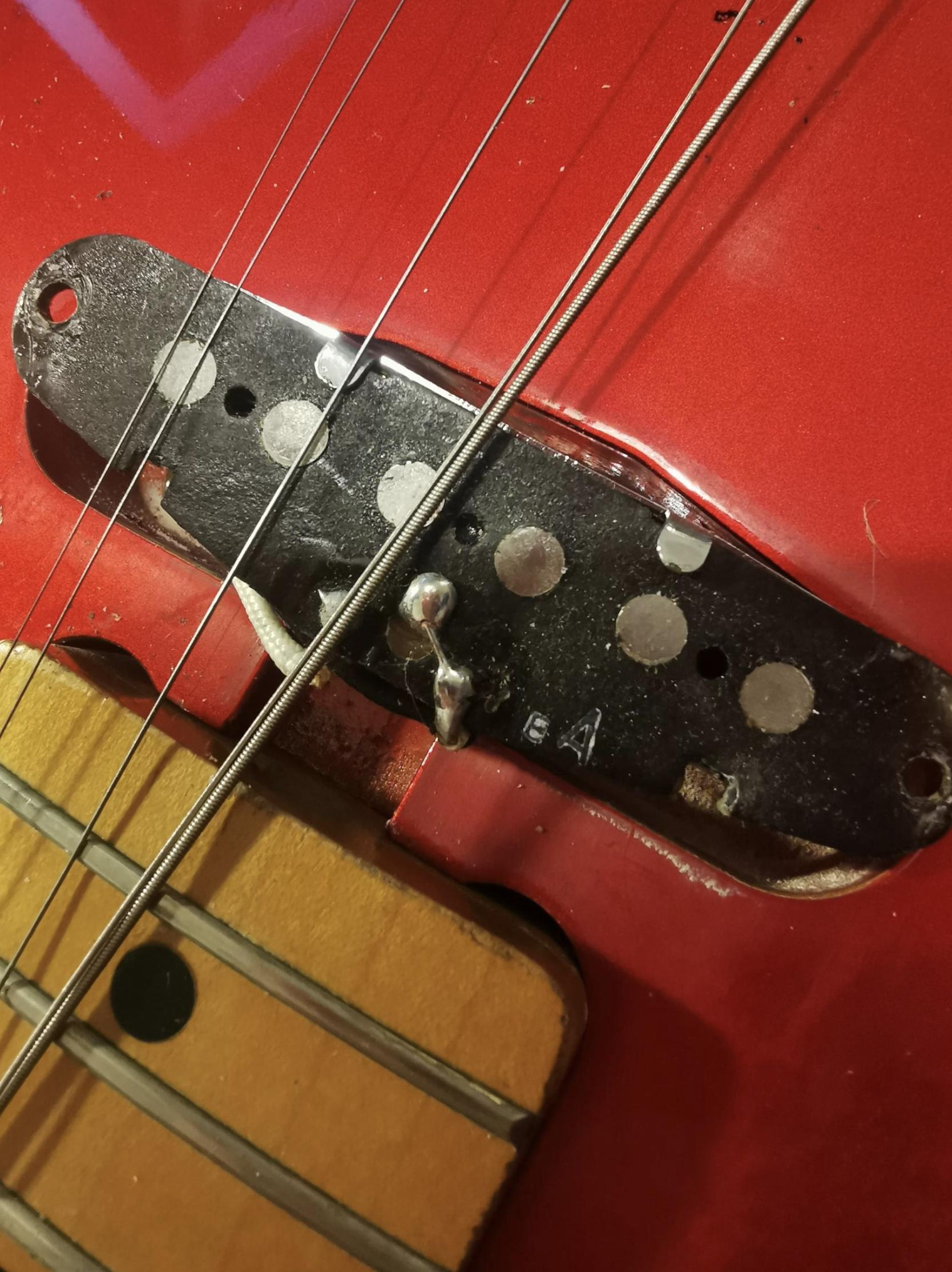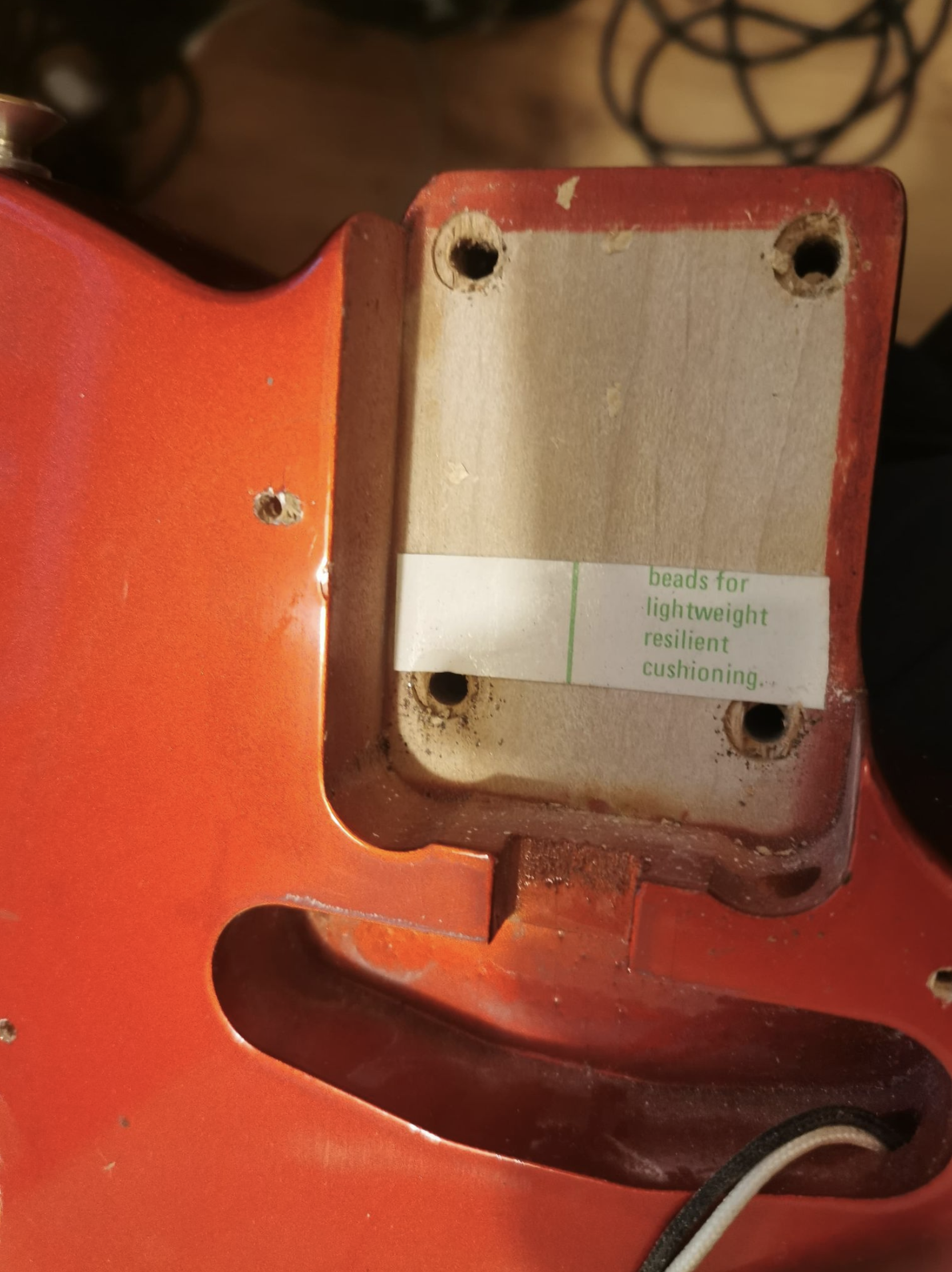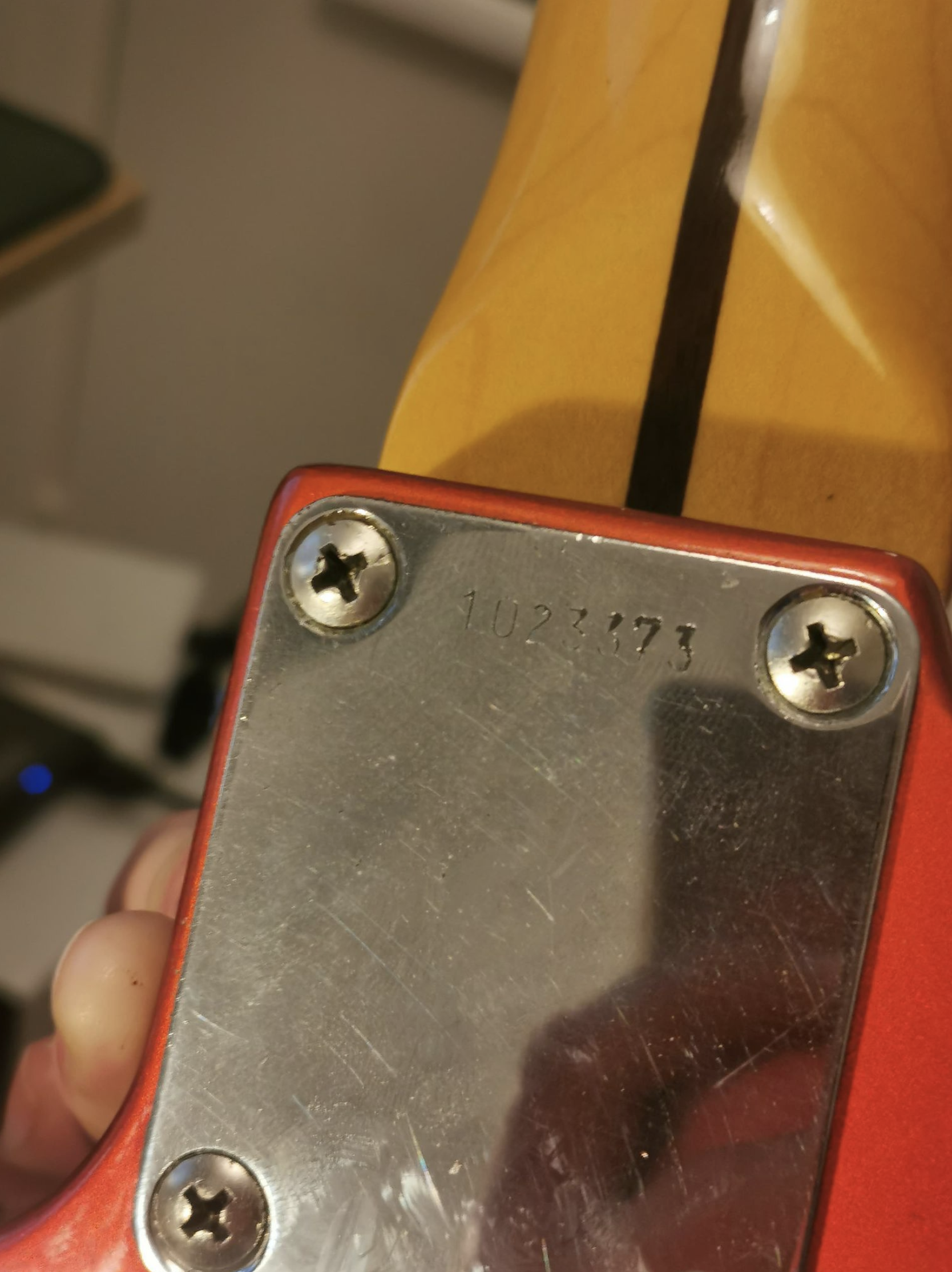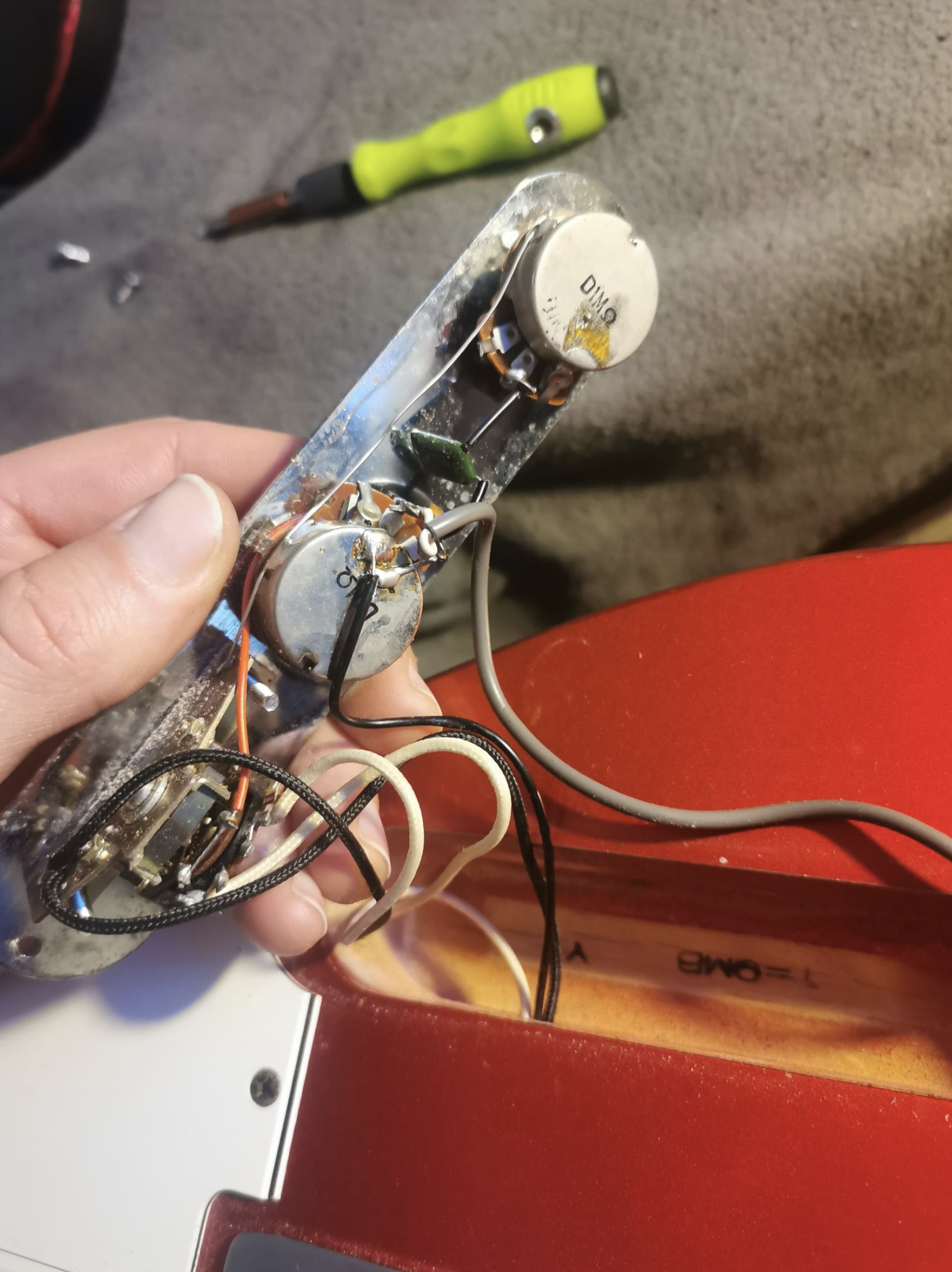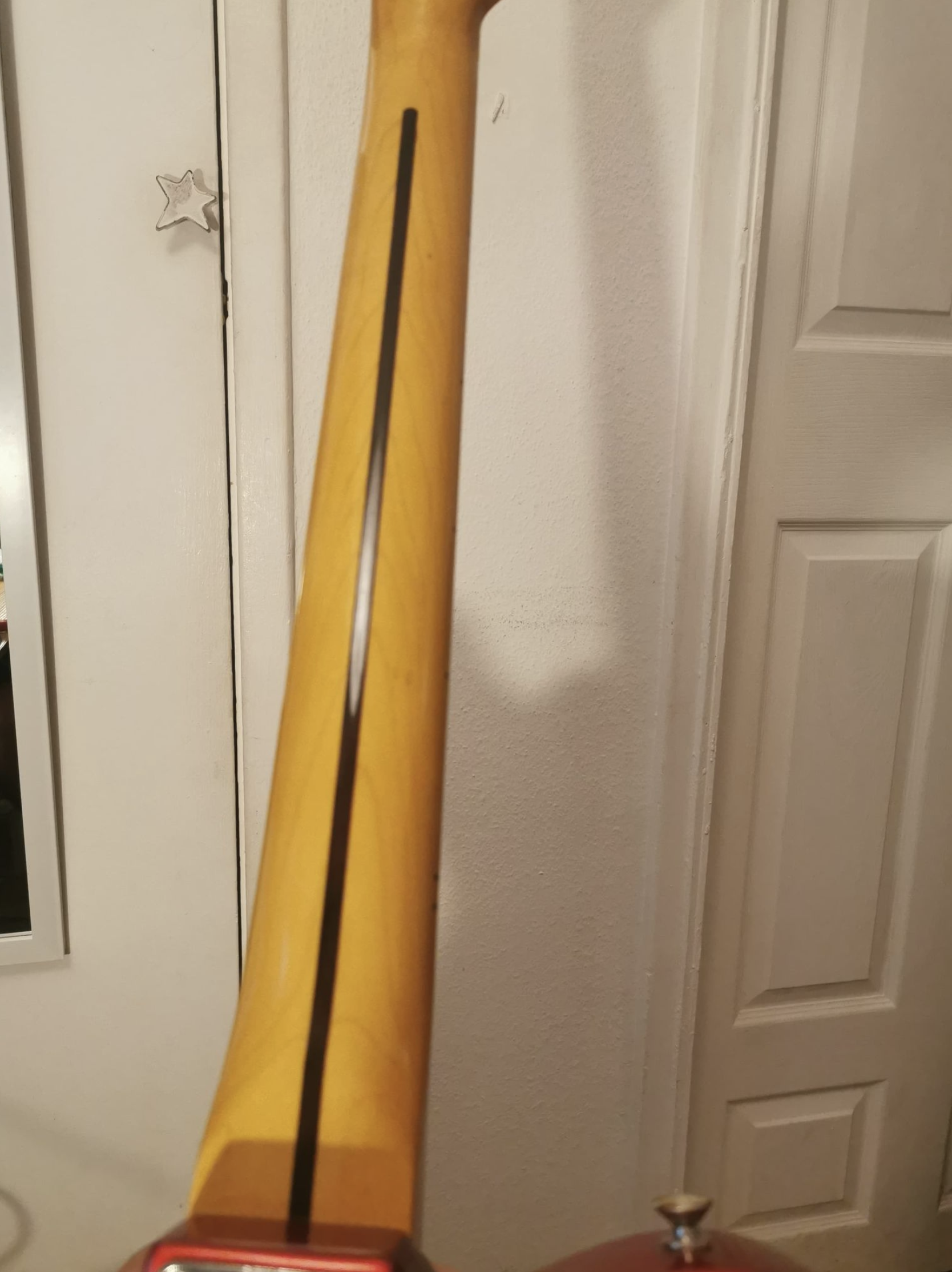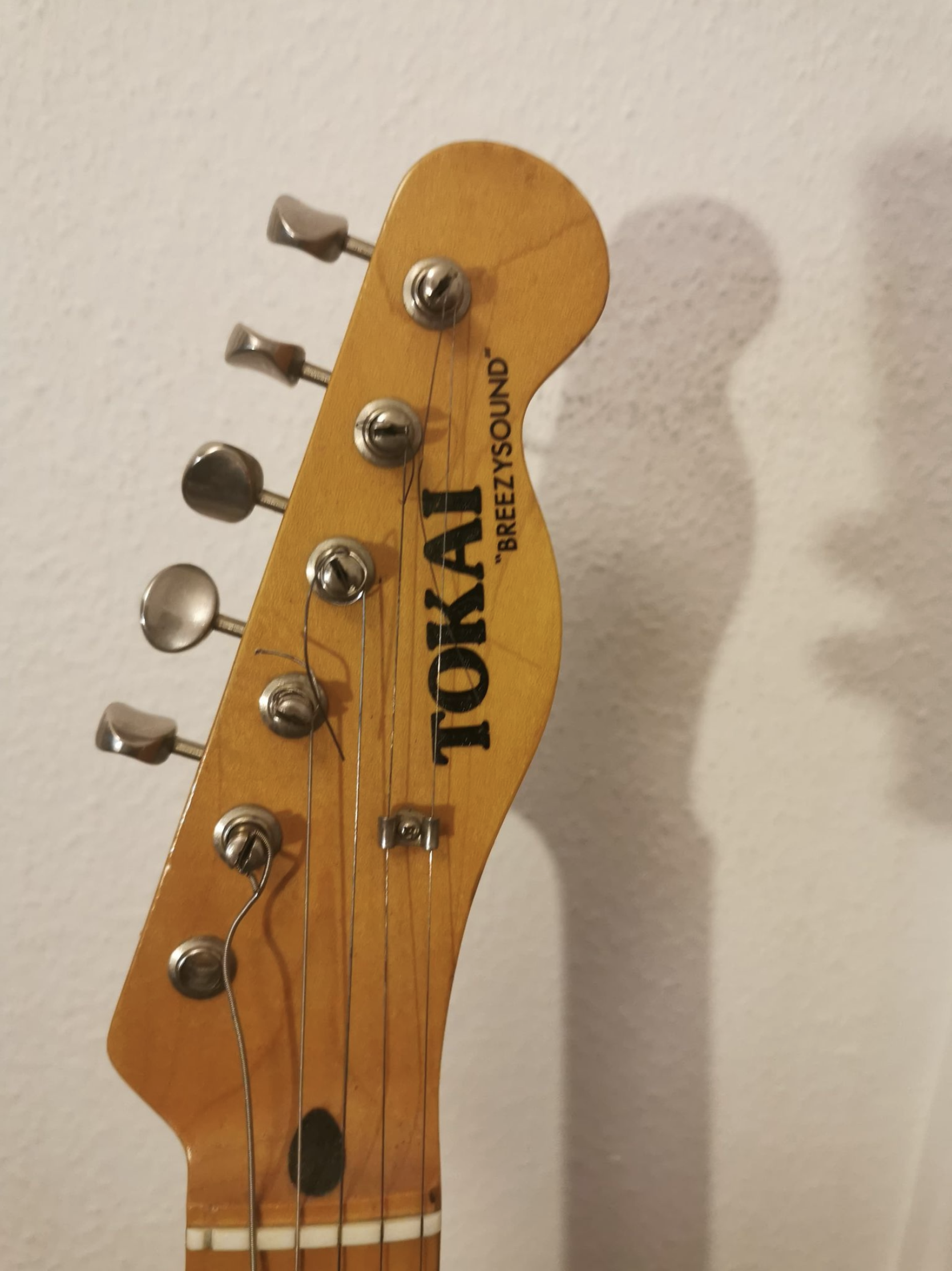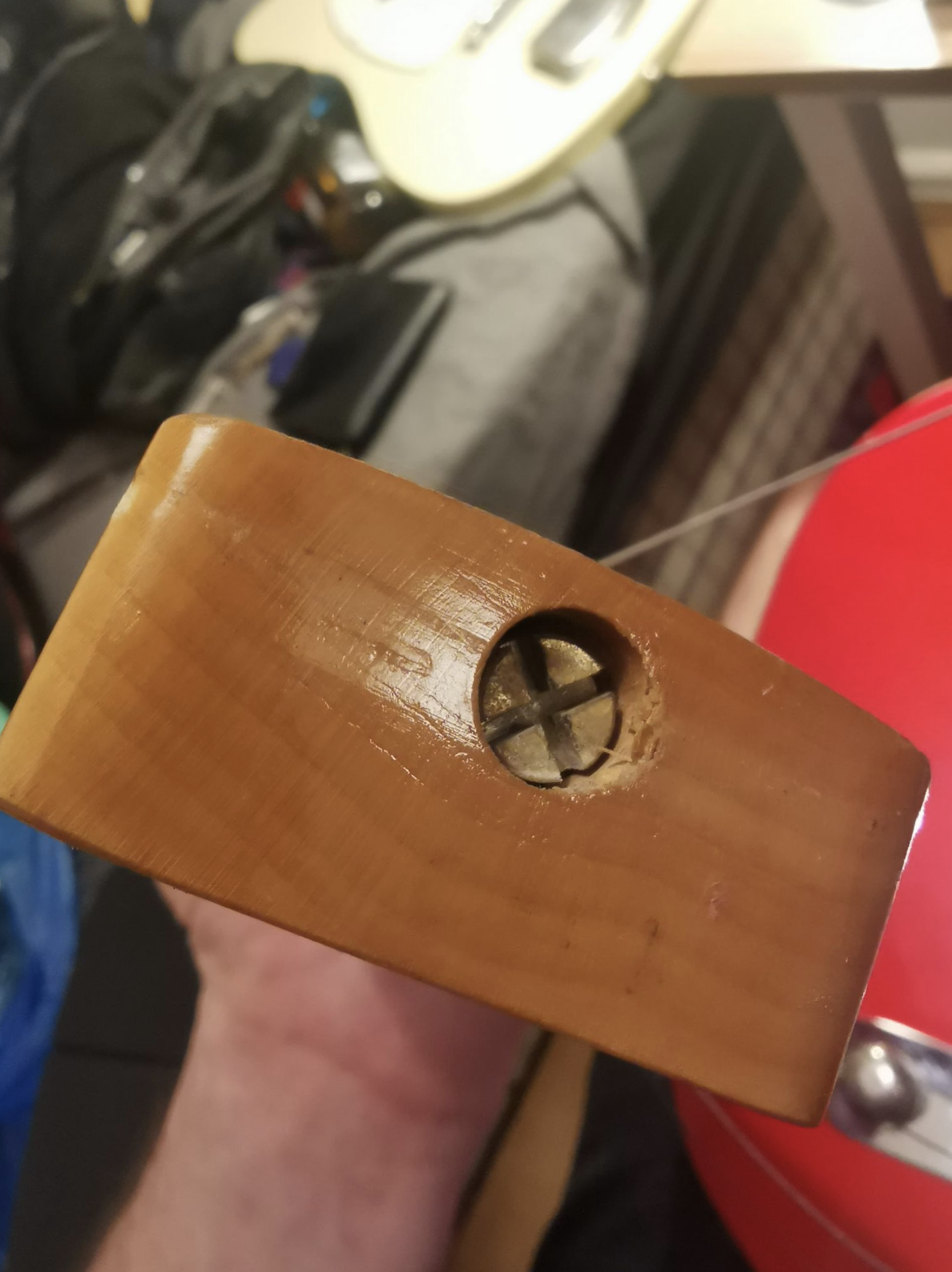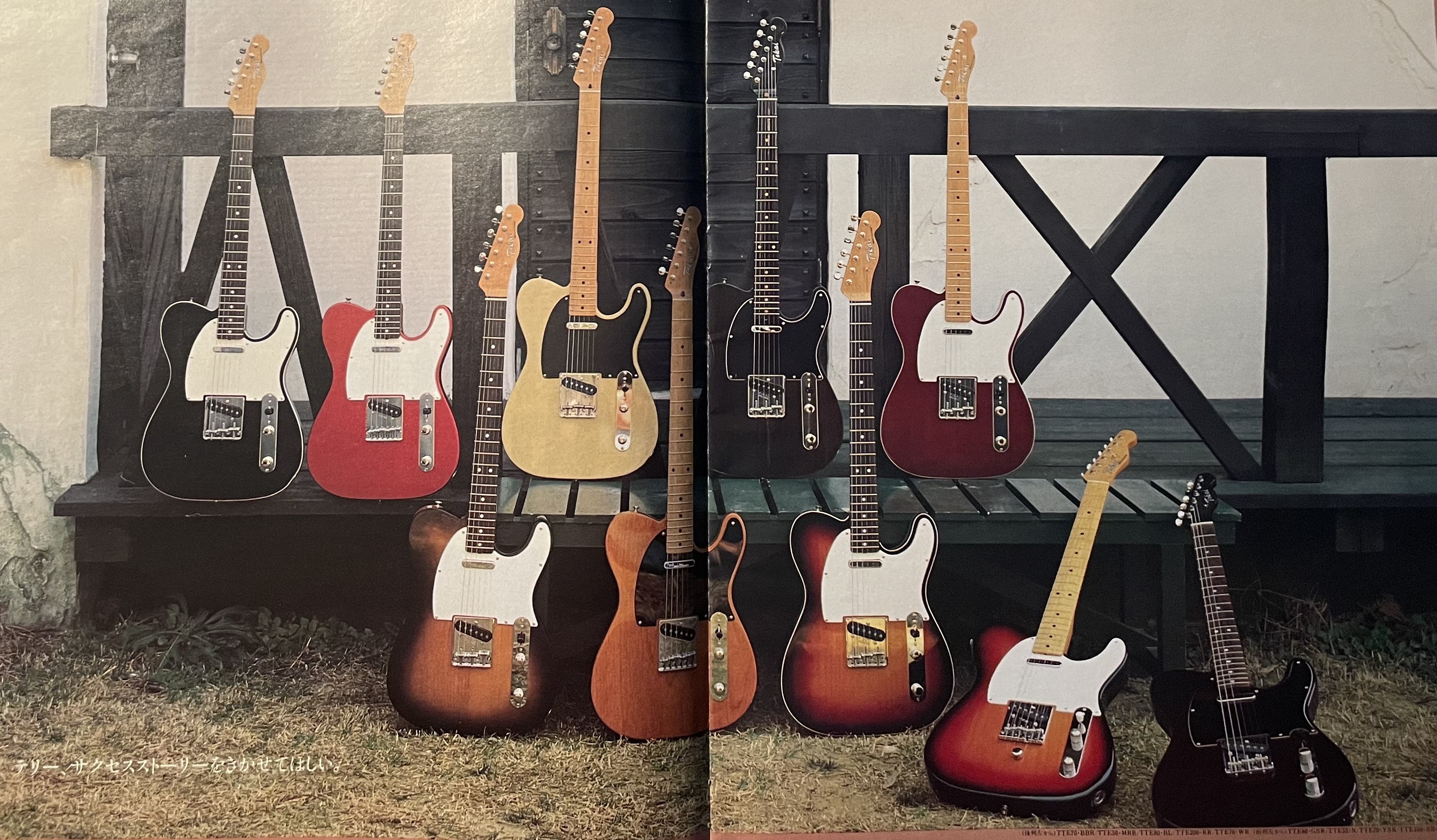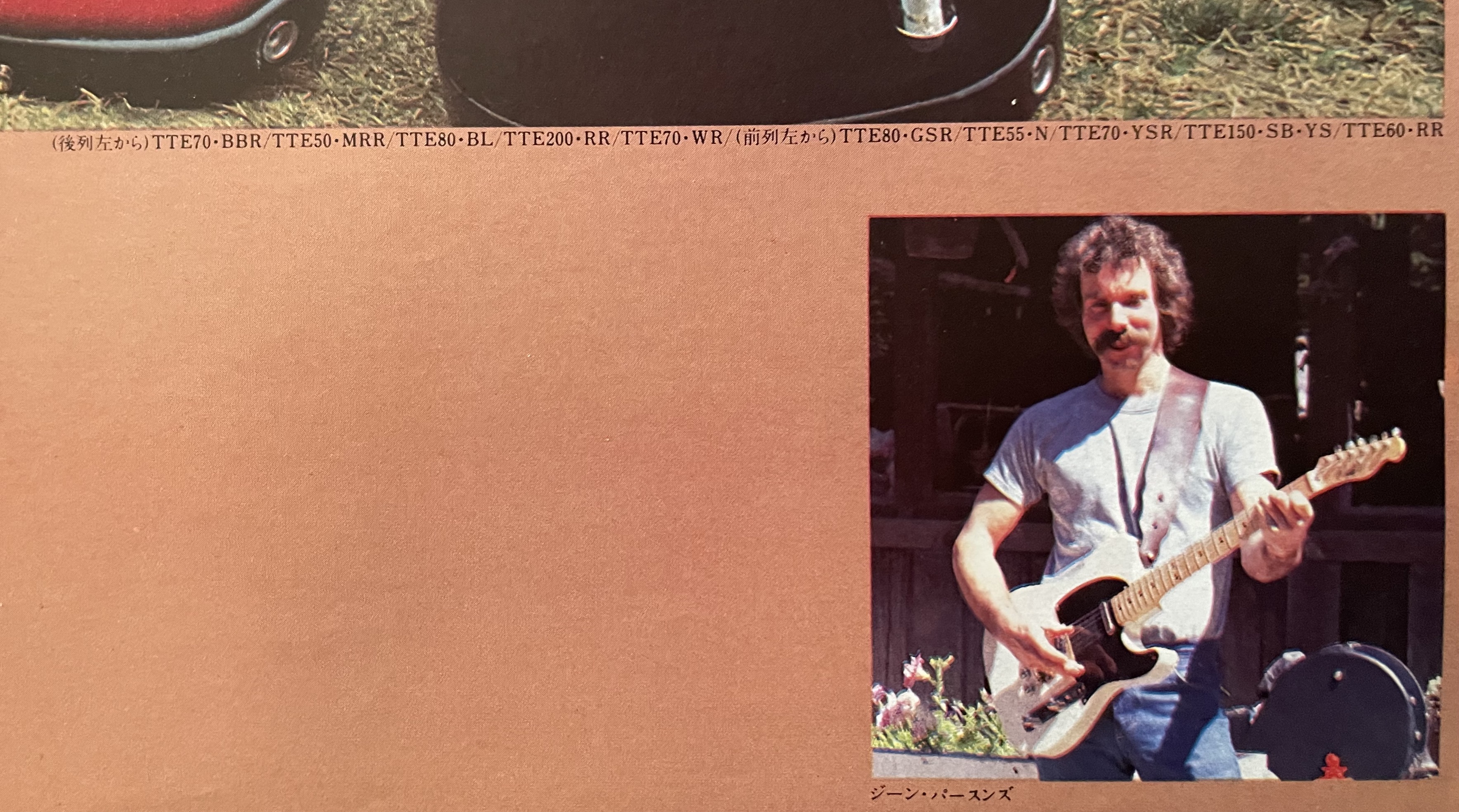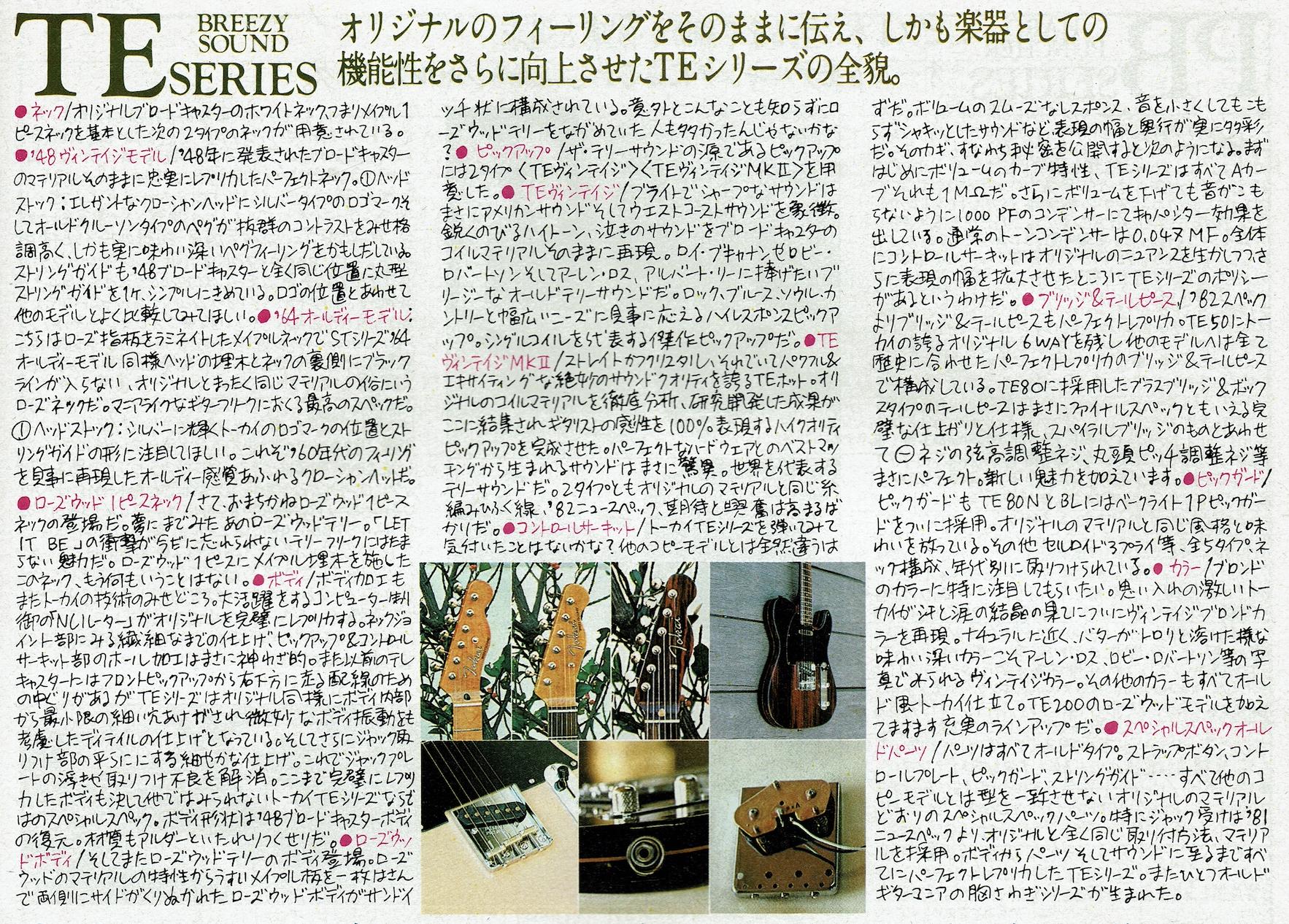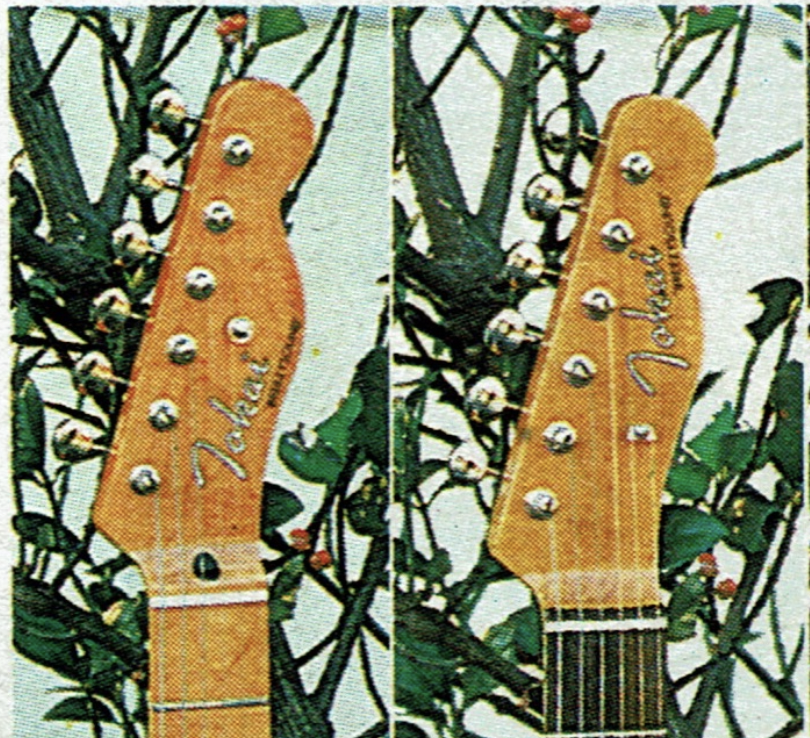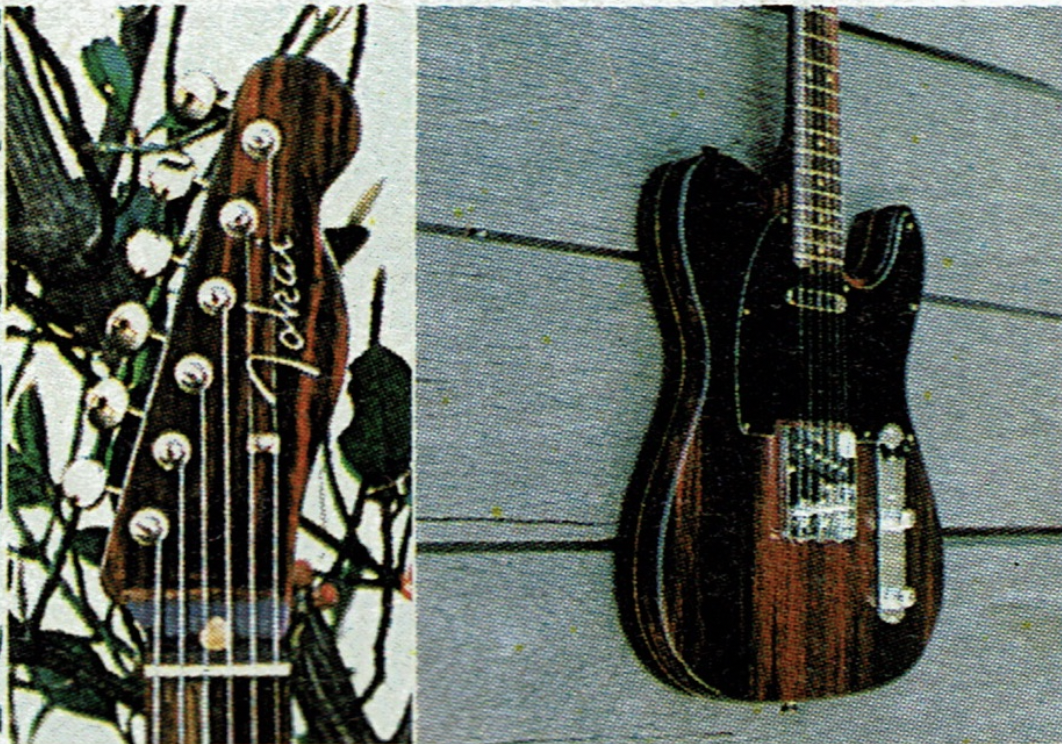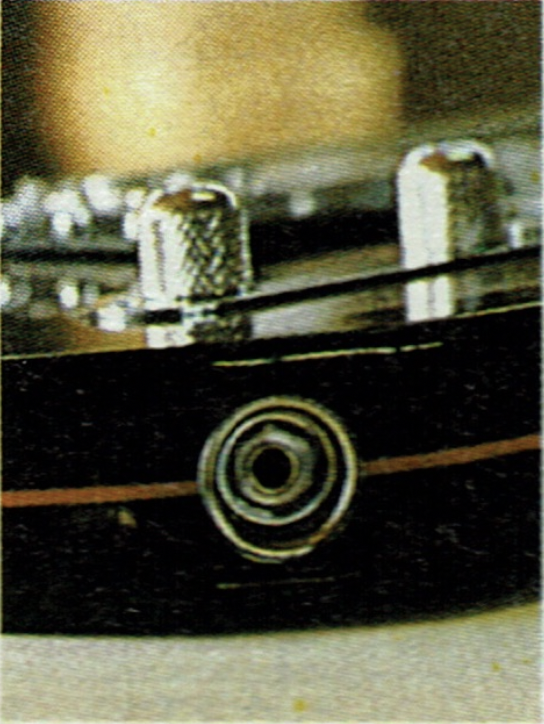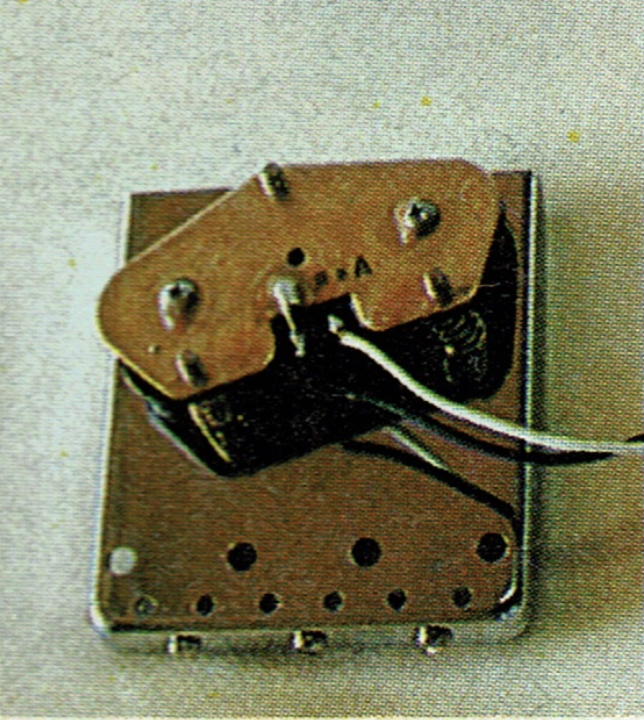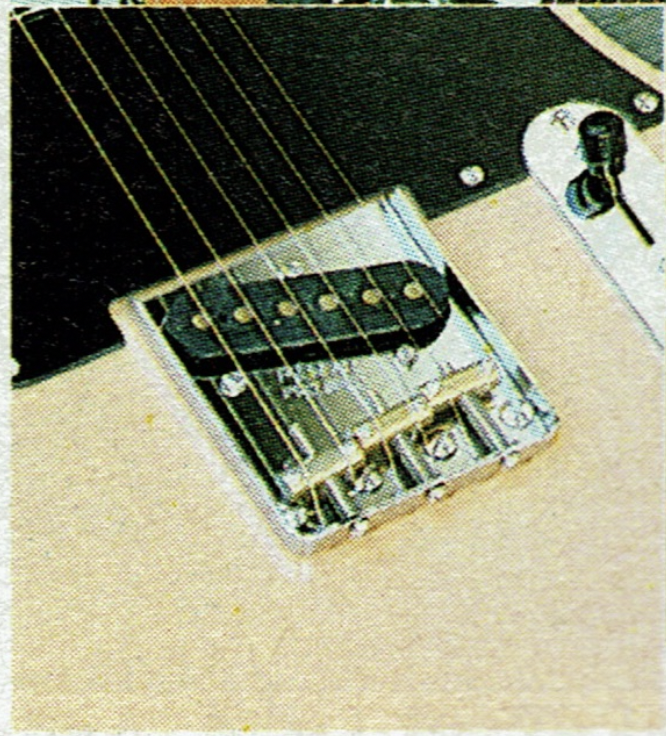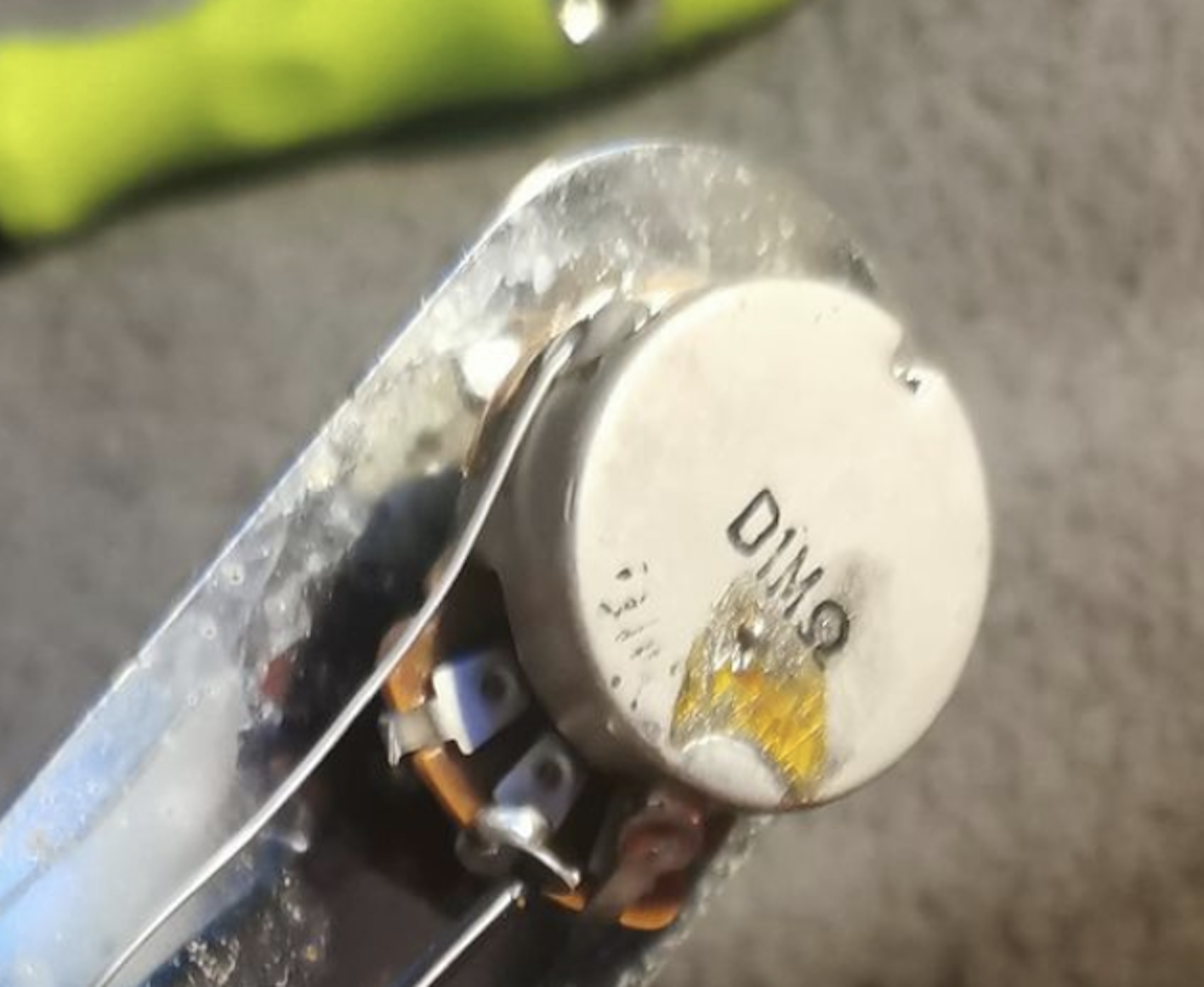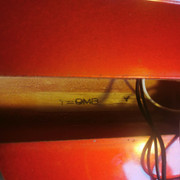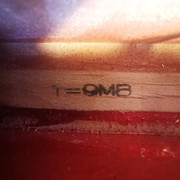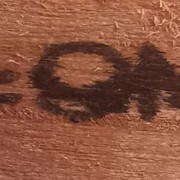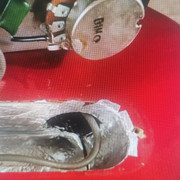Spring 1982 catalog with a Google translation.
● Neck: The following two types of necks are available based on the white neck of the original Broadcaster and the one-piece neck of the fluffy maple. '48 Vintage Model / Perfect Net 7 which was rarely used in Tadashi's room as it was the 2 terriers of the Broadcaster announced in '48. D-Hudstock: Ezant's Croshan Had, bar-type D-Gomark and old Kluson-type pegs show outstanding contrast and give a prominent pug feeling. As for the string guide, 14 round string guides are set in the exact same position as the '48 broadcasters. I'd like you to compare it well with other models as well as other models of D Go.
● 14 Oldy model Uni Chichi is a Maple neck with a laminated rosewood finger board. Like the ST series 4 Orui model, there is no black line on the head Riki and the quake side of the neck 7, which is exactly the same as the original G. -2 "It's a neck. It's a spec of a record high for a marlike guitar freak.
●Headstock: I want you to pay attention to the position of the Tokai logo mark and the shape of the string void north of silver. Ordy Garden is a closhan hat full of love.
● Rosewood 1-piece neck Omachikawa Rosewood 1-piece neck graveyard. That rosewood Delhi that came close to me. "LET IT BE" is a mesmerizing freak that can't be swayed by the urge. The second neck with a maple-like treatment on one piece of rosewood, nothing more to say.
● Body: The highlight of Tokai's decay technique. Computer-controlled CNC is a big success, and the original is completely removed to 0o. The neck joint has a delicate finish of up to 43, and the set-up & control D-le circuit part is hoisted. The TE seeds have a small R dew from the inside of the body like Ojar, and the body vibration is subtle. Fine finish. This eliminates the dirty mounting failure of the jack plate. The Tokai TE series, which has been completely lifted up to this point, can never be seen in the Tokai TE series. The obstacle to the restoration of the alder is also a mess with Alder.
p-Zutand Bommy / And also Rosewood Terry's body appeared Rosewood Body is sandy with a rosewood body that is hollowed out on both sides with a maple pattern sandwiched between the timeliness of the rosewood material
The width and depth of the expression are really ta-bombs, such as Poom's 2 muzzle-less sun 2, and even if the size is small, the sound is crisp. blood. That's right, it becomes like a ground when the Nakachi Tomb is open to the public. First of all, the curve characteristics of Volu 4, all TE seeds are A curve, which is also 1M2. Even if the volume is lowered further, the exhaust passiter is produced with a 1000 PF condenser so that it will not be painful. The tone condenser of the joint school is 0.047 MF. As a whole, the Tele D-Circuit has the holiness of TE Seeds where the original Nuan 2 is utilized and the expression is expanded to 5).
● Bridge & Tailpiece: 7822 Bridge & Tate from Pet 7 The piece is also Panfect Wrestling oTE50, leaving Toe M's invitation Orijal 6WAY, and all other model A are made with Perfect Wrestling 0 Rika's Bridge & Tailpiece that fits the history. There is. The plus bridge & box 29 i70 tape 2 adopted for TE80 has a perfect finish that can be said to be the final spec, and the spiral bridge's string harmonic release screw round head pin 4 tone. It's just like a flower screw. Adding new charm.
● Pick guard: Pick guard also uses Bakelite 1P pick guard for TE80N and BL. The same as the original material has the same dignity and taste. In addition to the celluloid 3-ply, all 59 Ipneck-sama have been weakened by age group.
● Color I would like you to pay particular attention to the color of blonde hair. A violent ton of bad stuff finally reproduces the Vintage blonde color at the early age of sweat and mixing. 4 A vintage salah that can be seen by the emperors such as A Aalen Ds and D Bee D Bertlin. Other colors are also old-fashioned. It is a full lineup with the addition of TE200's Rose Wood model.
● Special Order Parts: Pants are peeled off and old type. Strap button, control plate, pick guard, string guide ... All the original squishy parts are the same as the original material, which is not the same as other copy models. Adopts exactly the same mounting method and material as. The TE series with the perfect 70 Rika, which is the same as the parts and sound. In addition, another old guitar Cona's cell Sawagin Swords was born.
http://www.tokaiforum.com/viewtopic.php?f=11&t=26114&start=15




